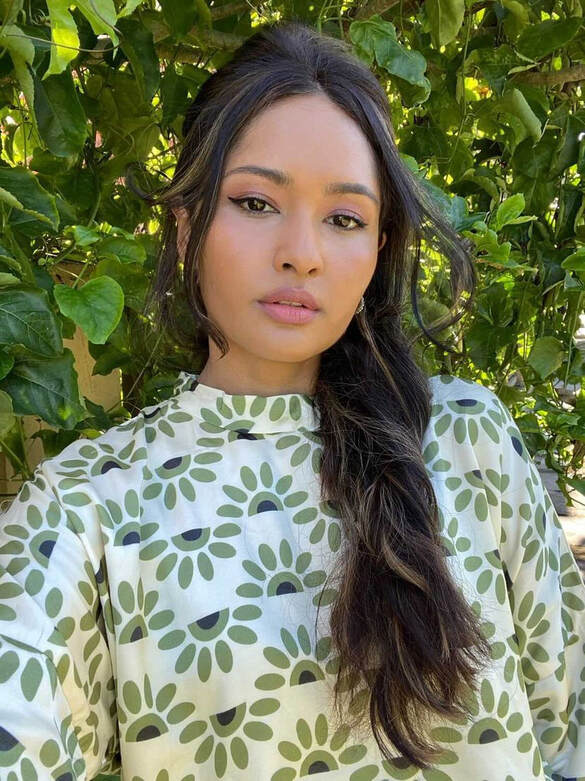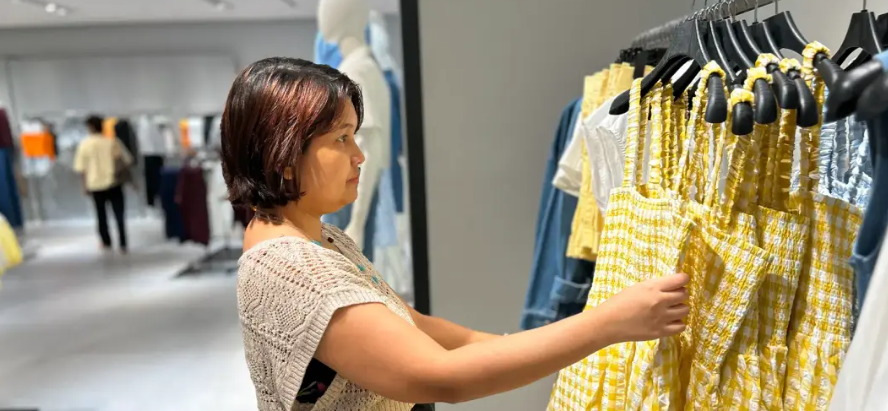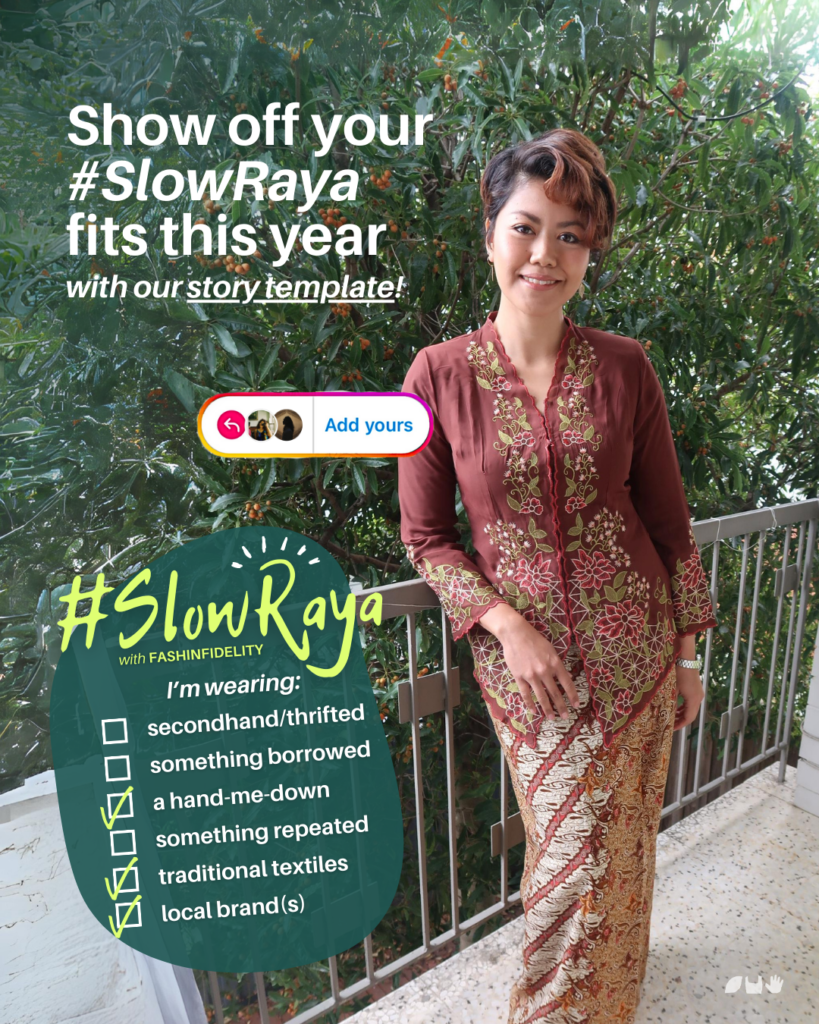6,494 words words; 15 mins reading time.
An interview with Haida Yusof-Yeomans, proud sourcing professional of beautiful things and ex-celebrity stylist
Here at FASHINFIDELITY we get all sorts of questions from our Malaysian followers but the ones that come up very often is on thrifting and the second-hand clothing scene. If you’ve followed us a while, you may also know that we’re *always* advocating for new and refreshed ways to use what’s *already* in your wardrobe as well as not buying anything new first and foremost, but evidently, there remains challenges to adopting the thrift lifestyle.
You may remember that I took on a few of your questions during an IG Live on 14th July (you may access the recording here.) What was evident during that session was that even though there are so many who are receptive to thrifting and expressed their eagerness to play their part in consuming differently, the second-hand scene in Malaysia is not as abundantly accessible to many, quite yet. Since that day I’ve been mindful of others who could share their experience on creatively finding different ways to be stylish, and who more qualified to share their thoughts on this other than Haida Yusof-Yeomans (IG: @haidayusof), celebrated stylist-cum-thrifting icon of Malaysia?
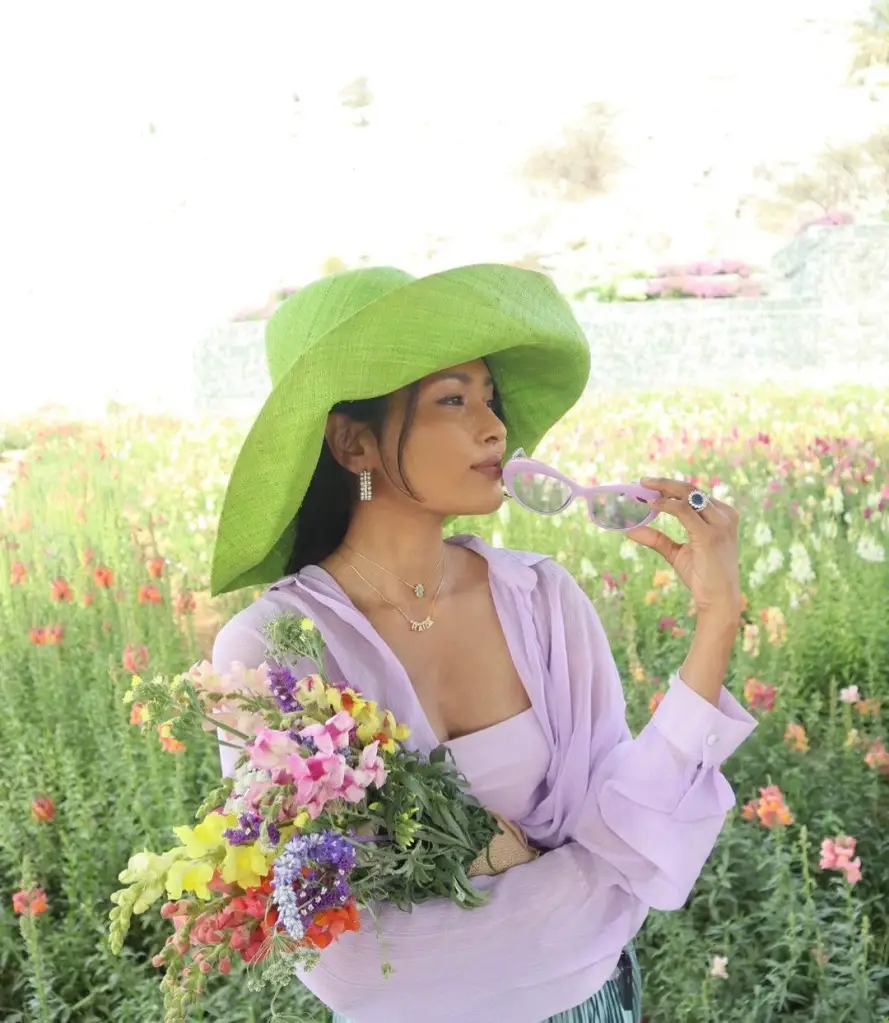
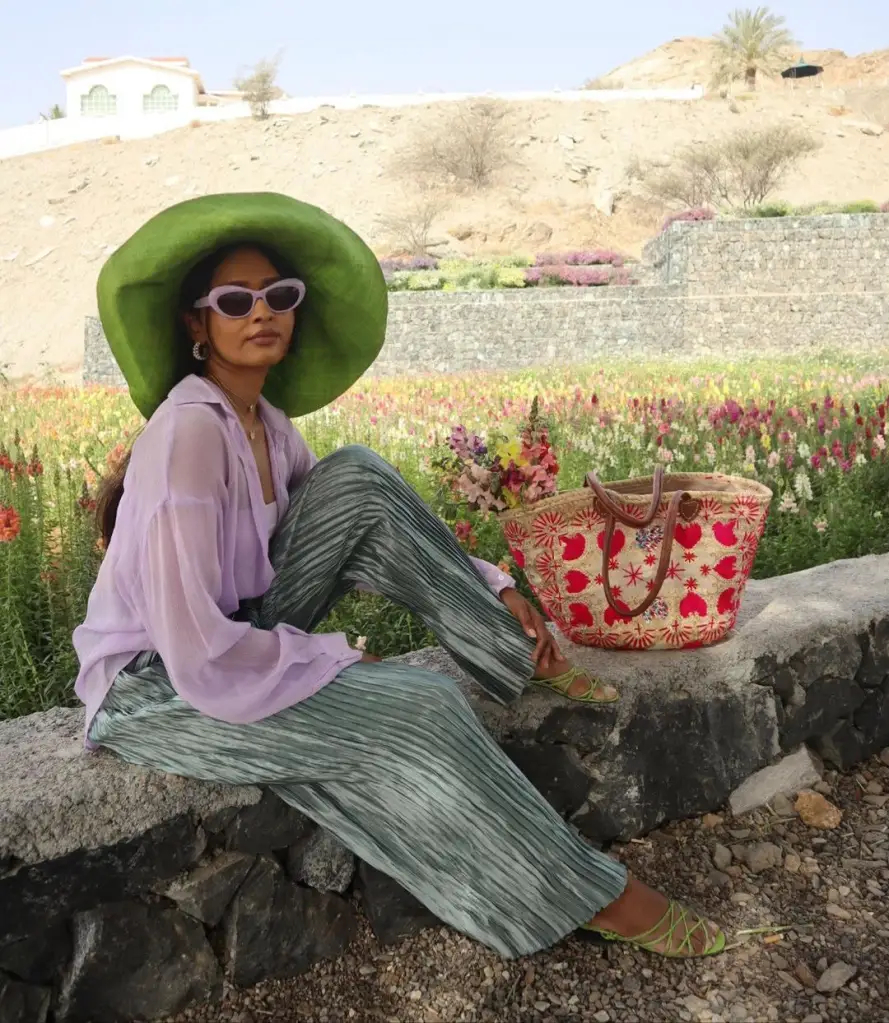
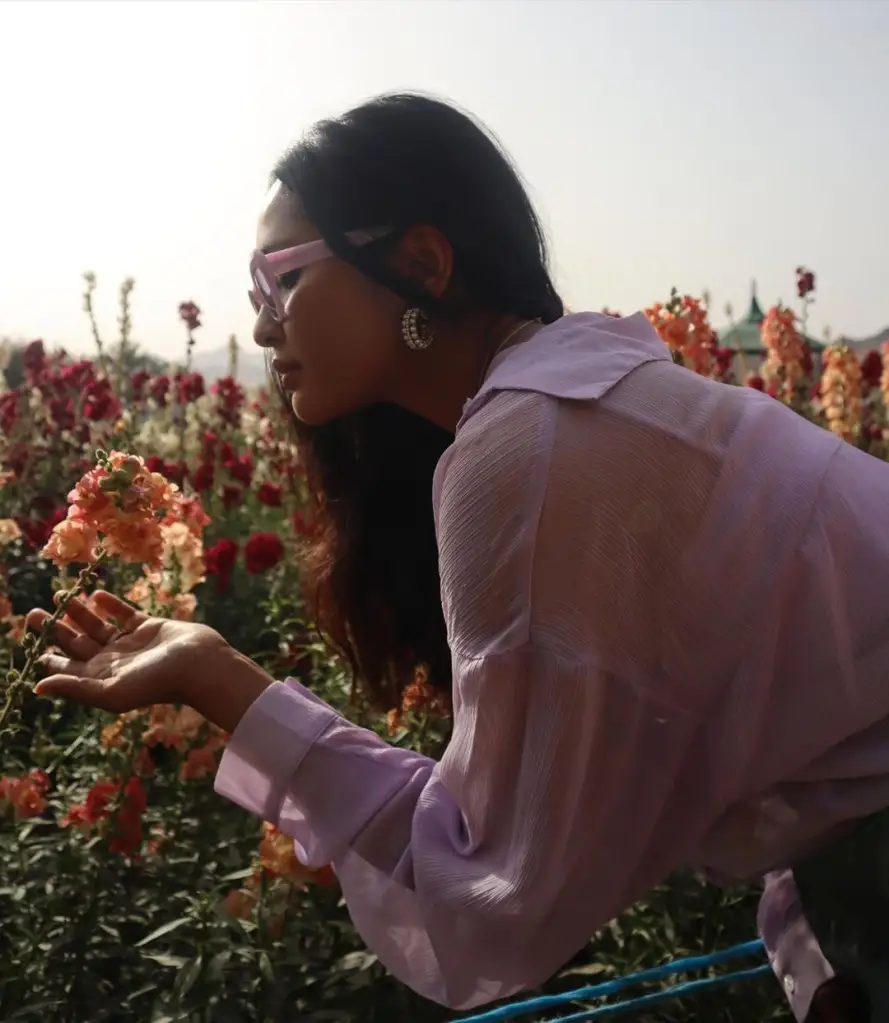
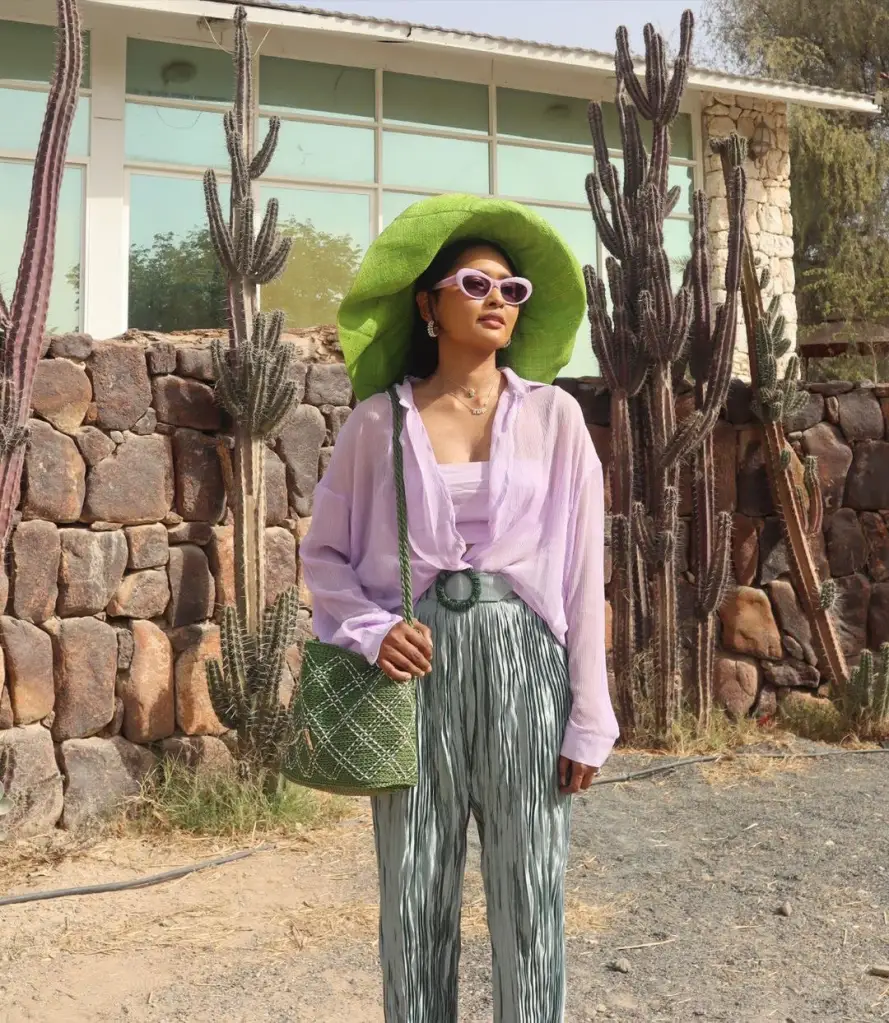
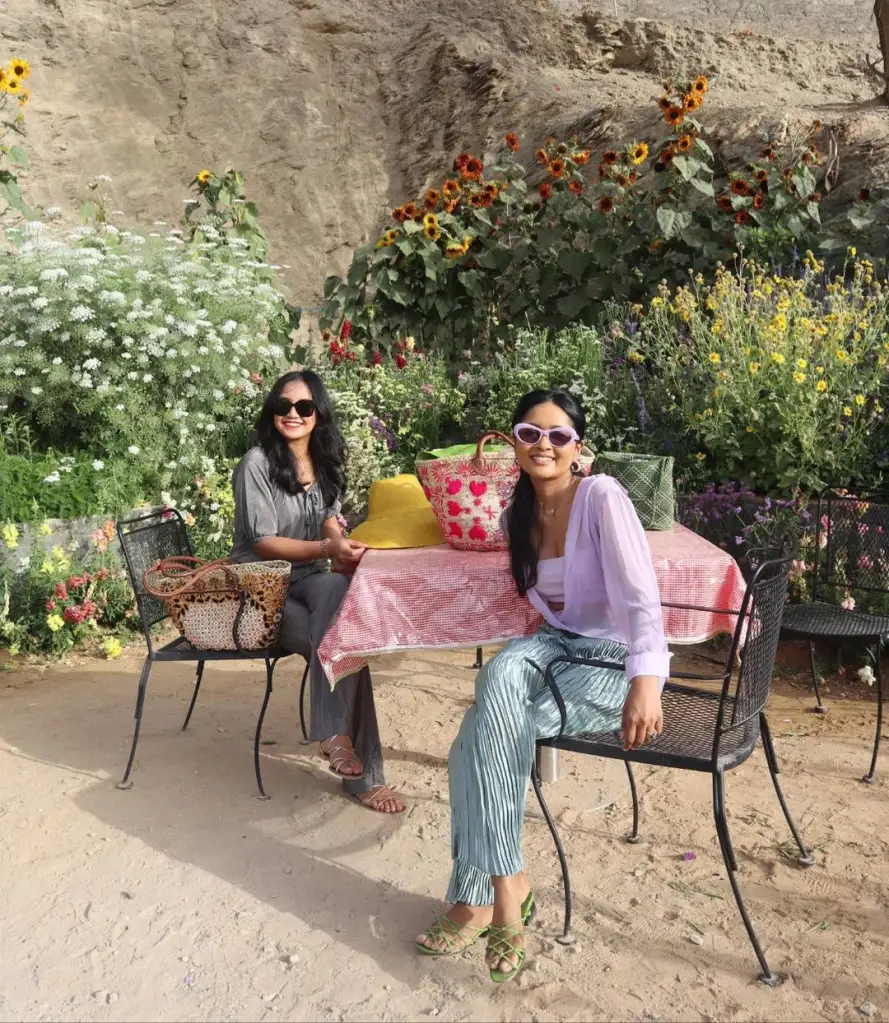
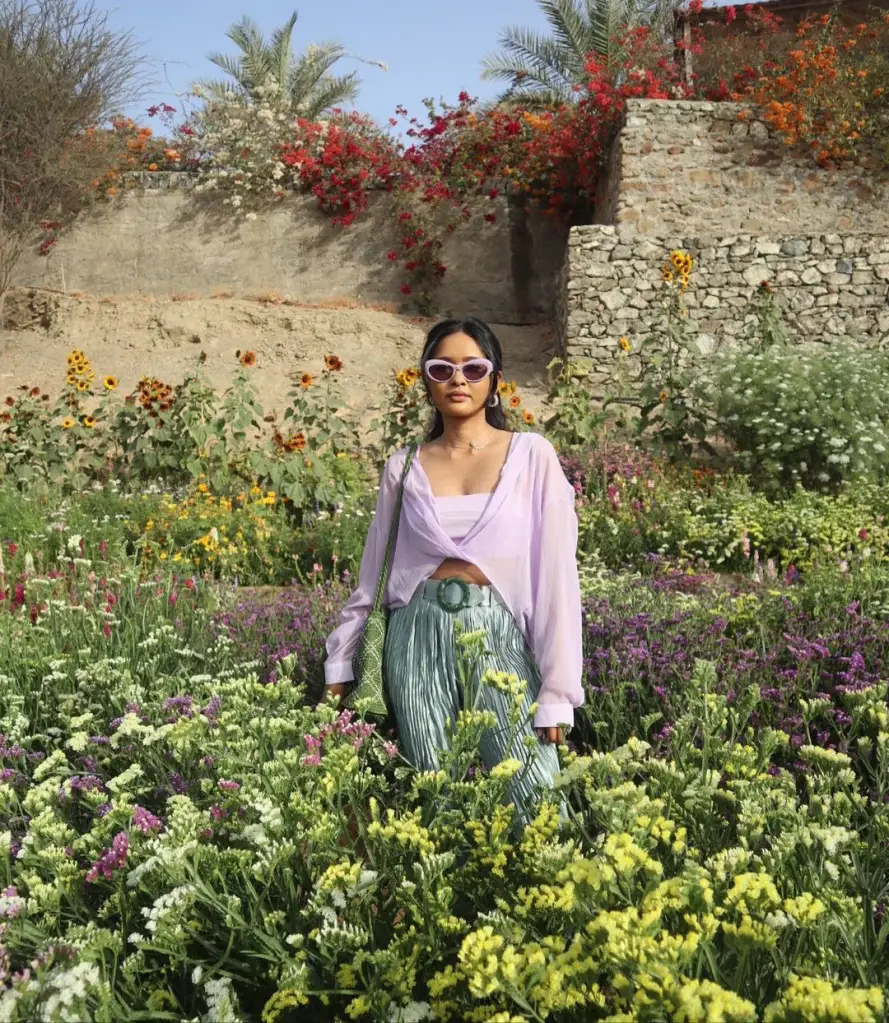
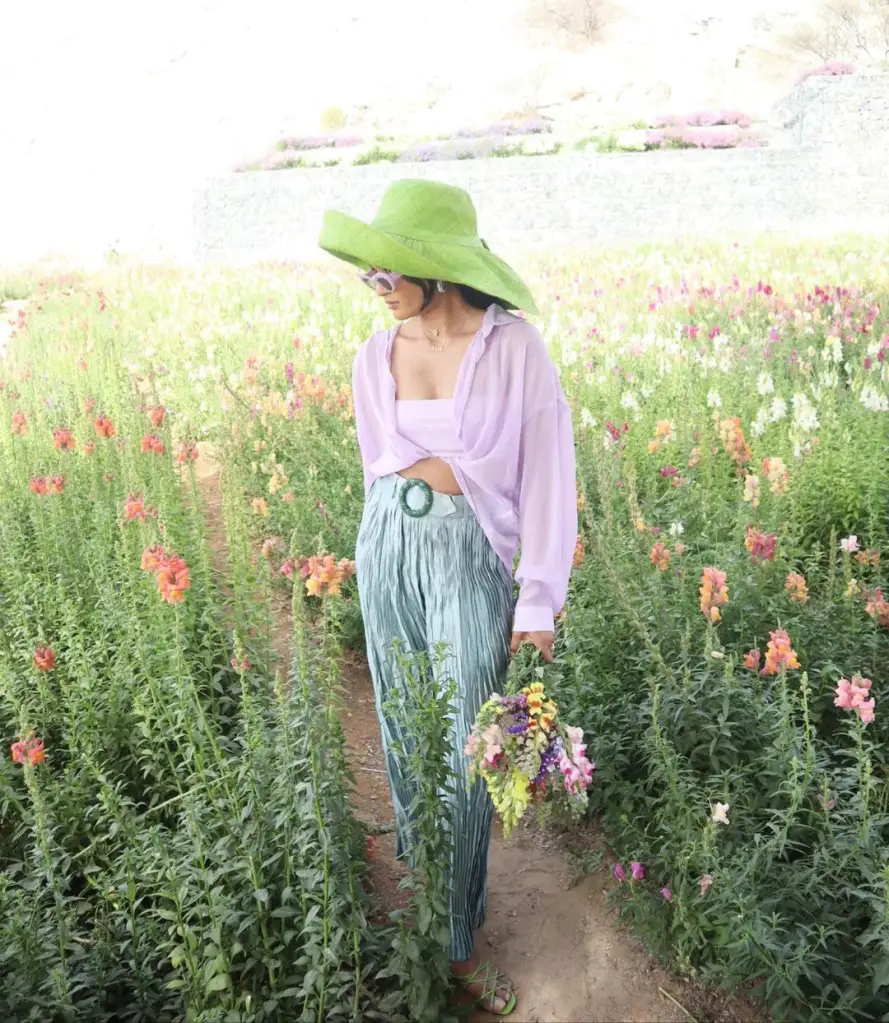
Speaking to her on Zoom from the comfort of both of our homes, she tells me she is ready by uploading a photo of herself on her IG story 2 mins prior to our agreed meeting time (looking flawless, of course.) We had a friendly chat as I started off thanking her for her time and explained our interview will be recorded. We had been friends for a number of years when I was introduced to her by my good friend, Iz Sulaini. When I somewhat ‘infiltrated’ the fashion scene, I decided to base myself in Malaysia from 2018, and constantly looked to her as reference for contemporary news and happenings. She was at the time an editor for an online zine called Error Digital (IG: @errordigital.) I wanted to get to know the ins and outs of her ‘world.’ I assisted her on a fashion shoot once (for ZALORA) and gained a baby stylist badge as well as covered stories for Error. Since then, we’ve regularly been keeping each other up-to-date on each of our own projects, and have been featured together on forums on sustainability, styling, and fashion.
When Haida announced she was leaving Malaysia for good to be in Dubai in April 2019 (with her husband, Stuart, an investment and asset fund manager), she was leaving behind not only her roots and her family, but also the publications and styling industry that was too rigid for her liking. But how can she not? Being raised by a seamstress mum who was very much into art, drawing, and cooking—instilled in her the joys of breaking boundaries and unusual ways of appreciating, but also depicting beauty. It’s no wonder her younger sister, Dhaniya Illiani is also a creator (formally: multi-disciplinary contemporary artist, IG: @dhanilliani.)
It’s not a secret that Malaysia’s mainstream media still lack diversity, rebellion and adventure in creativity, even though there are enough ‘rule’ breakers by what you can see on unconventional media ‘outlets’ such as Instagram. Haida thinks these ‘left-field’ artists provide value to the arts industry, as well as generate quite the buzz and respect with corresponding accolades and recognition, locally and internationally. What’s missing are the strings that hold the industry together – government support.
As I pressed the record button on our interview, it doesn’t feel like there’s a Q&A session at all. We freely talk about our own ventures and thoughts on things, and here I offer you our (much truncated) conversation.

On pivoting, freedom, and the arts.
N: What do you do now, Haida?
H: Hi Najah! I’m excited with what I do now. Since being based in Dubai, I’ve obviously been isolated from the local (Malaysian) industry. Add in the fact that COVID happened. So the environment is kind of… a little stagnant? It’s just pretty much the same thing, if not even worse now. Because there’s no movement, there’s no mobility. It’s hard for people to progress in whatever plans that they have. But at the same time, it’s a good thing because it makes people think about how they can they rethink their business. So previously in Malaysia, I was a fashion stylist. I styled celebrities, clothing brands mostly. When I moved to Dubai, obviously, starting over wasn’t an option. I had to adapt to do another thing that somehow from a hobby became something that it has become now – a personal shopping service. Except that it’s more like me finding stuff, and some people like them. And if they ended up liking it, they buy it from me. Does that make me a personal shopper?
N: Well, basically, you buy things that you really like that catches your eye? I’m pretty sure that’s called having a retail business?
H: Oh it’s definitely as a business! I just don’t know what to call it. With personal shopping, the client tends to ask the shopper to buy certain stuff that they want. I rarely get that… I do get one or two requests. It’s basically me sharing with people really nice things they don’t often think to buy. And then people respond to that. I guess I’m a professional shopper.
N: I think I saw an article today asking whether any of us have pivoted our careers during COVID… and I’m pretty sure 90% of people have!
H: Oh, yes. I mean, who hasn’t? Especially people in the creative scene, what else can they do? It is really sad to see… What is a country without its arts? I had to change my career per se because I was restless all the time. The thing is, I’ve always loved sourcing items for my clients back when I was styling… I loved finding cool and unusual stuff.
N: I mean, when you were doing your styling work, you had to source a lot of things yourself, right? I reckon you’re pretty good at it!
H: I reckon!
N: Maybe you are professional ‘sourcer’ of good, beautiful things.
H: Yeah, it’s a bit of a mouthful, but I’ll take that. You know what, when it comes to sourcing stuff, I’m pretty damn proud of myself. There’s a sense of satisfaction when you are bargain hunting, or finding one-of-a-kind pieces, that thrill of finding something that you can’t get in shops! One of my biggest pet peeves is actually looking like everyone else. I feel like if you want to position yourself as a public figure in fashion, you can’t just follow trends, you either have to set trends, or you have to embrace things with consciousness, you know, with thought. When you are thrifting, the pieces that you find, because these are from 15, 20, 30 years ago, or even more, the quality of the pieces that are being produced are just a lot better; a lot more thought out. And they don’t look the same. For example, a lot of designers right now are just designing to cater to what’s hyped, meaning designs all ends up looking the same. We all have the same logo bag, same shapes and design. Whereas back then, there are so many styles, different types of workmanship and the craftsmanship absolutely stands out. Knowing I have bought them (quite) cheaply, and you can’t get the item anywhere else, brings me joy when I go and wear these pieces out, and a sense of accomplishment when I get asked where I get them from!
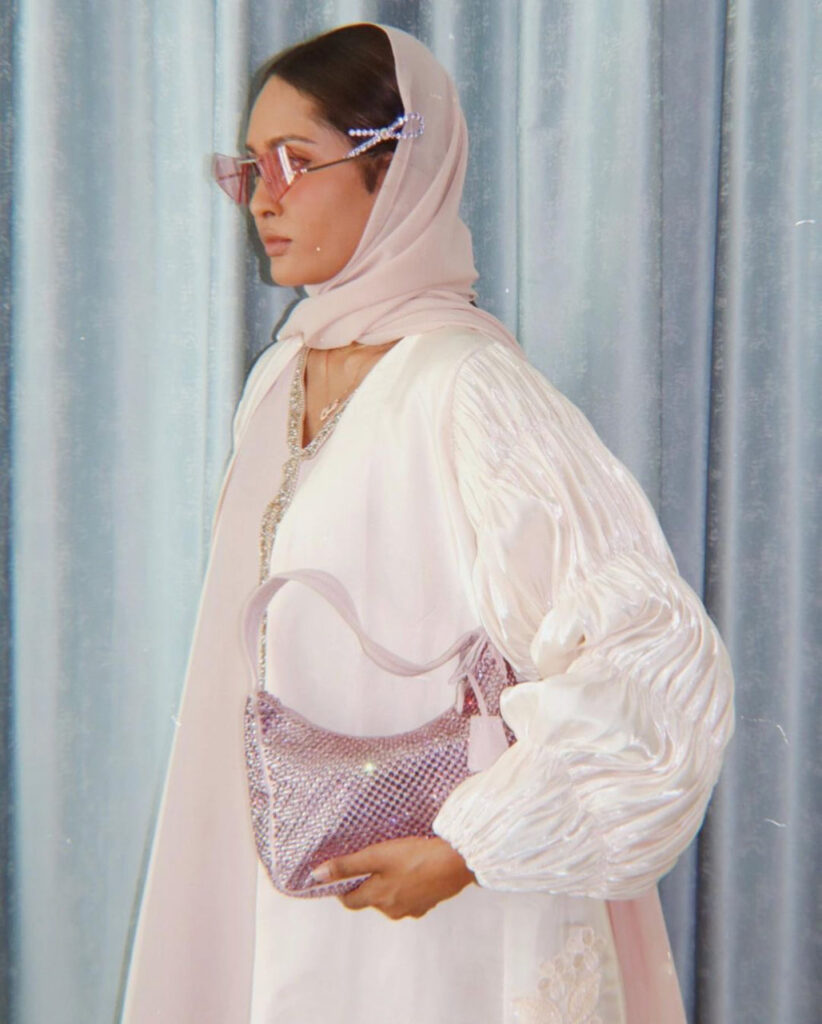
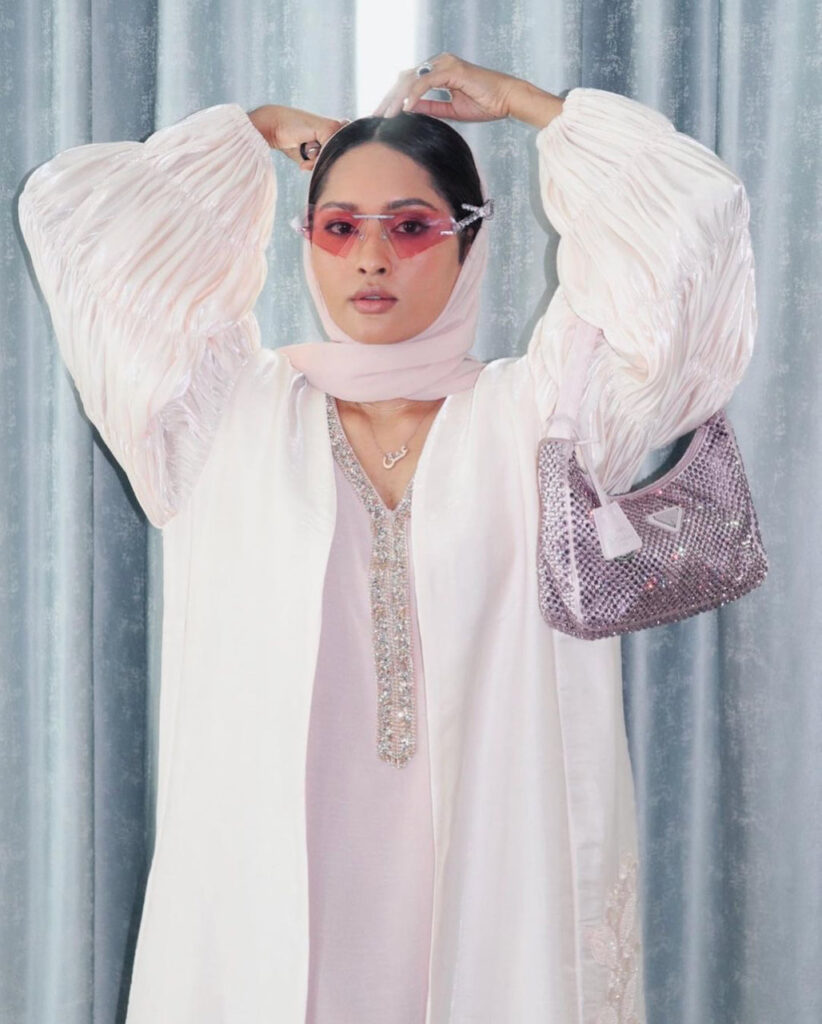
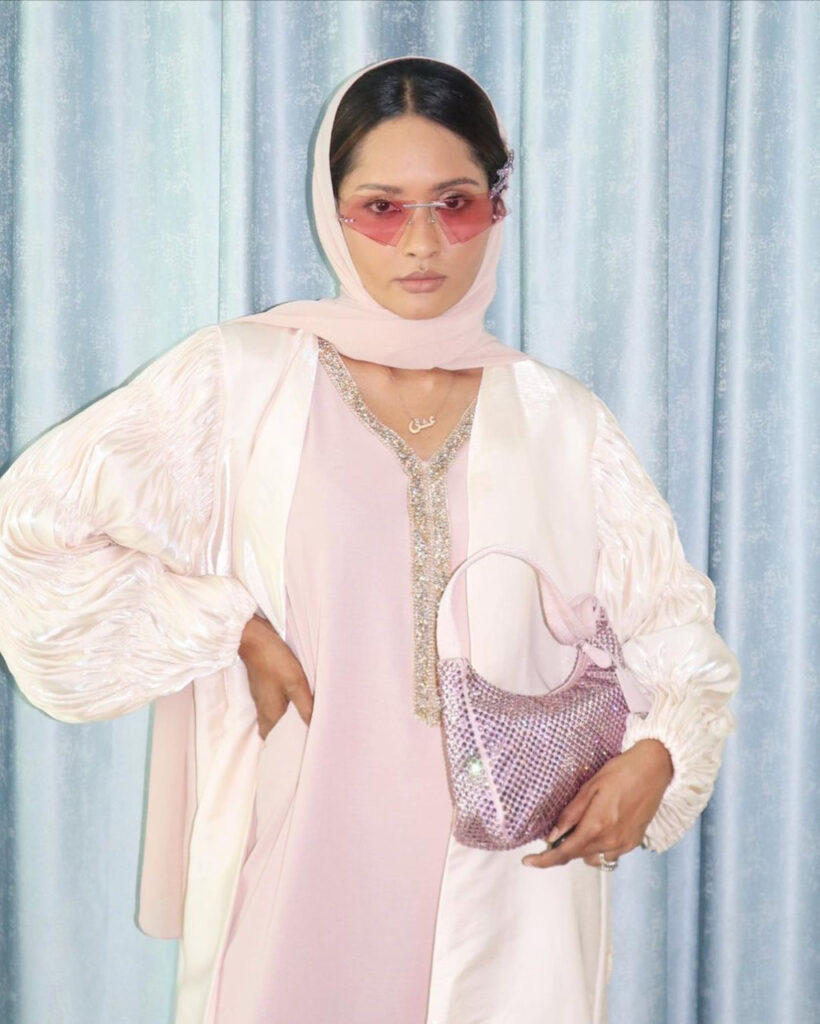
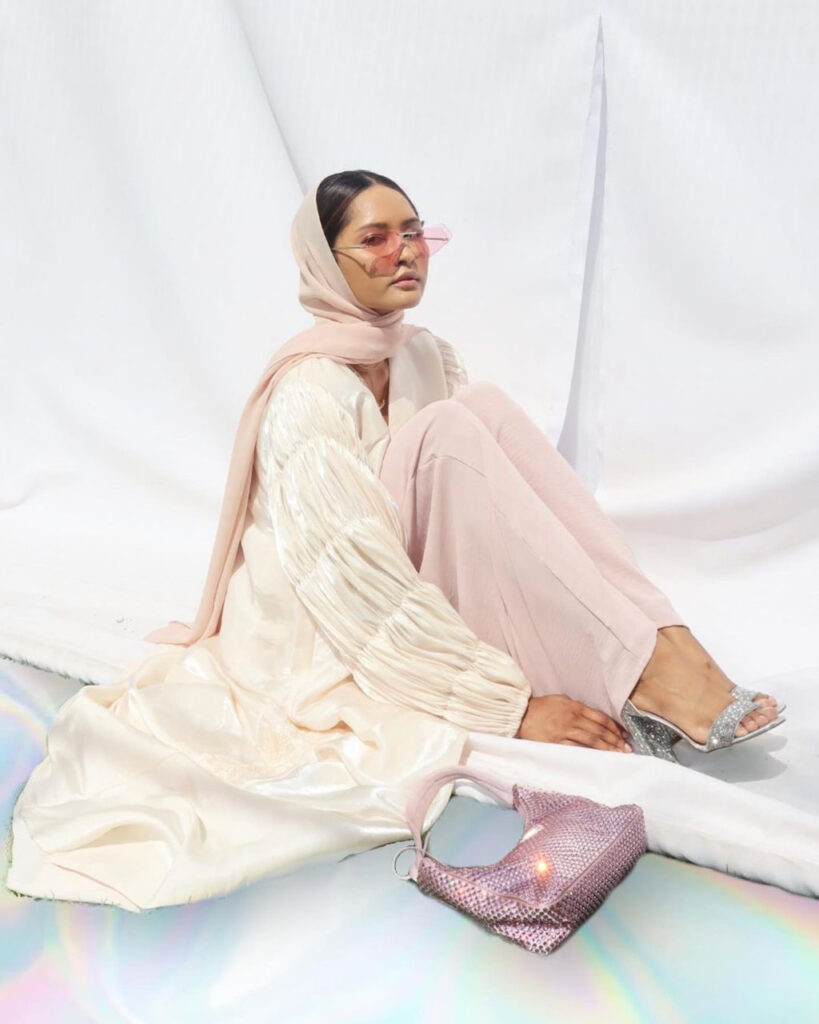
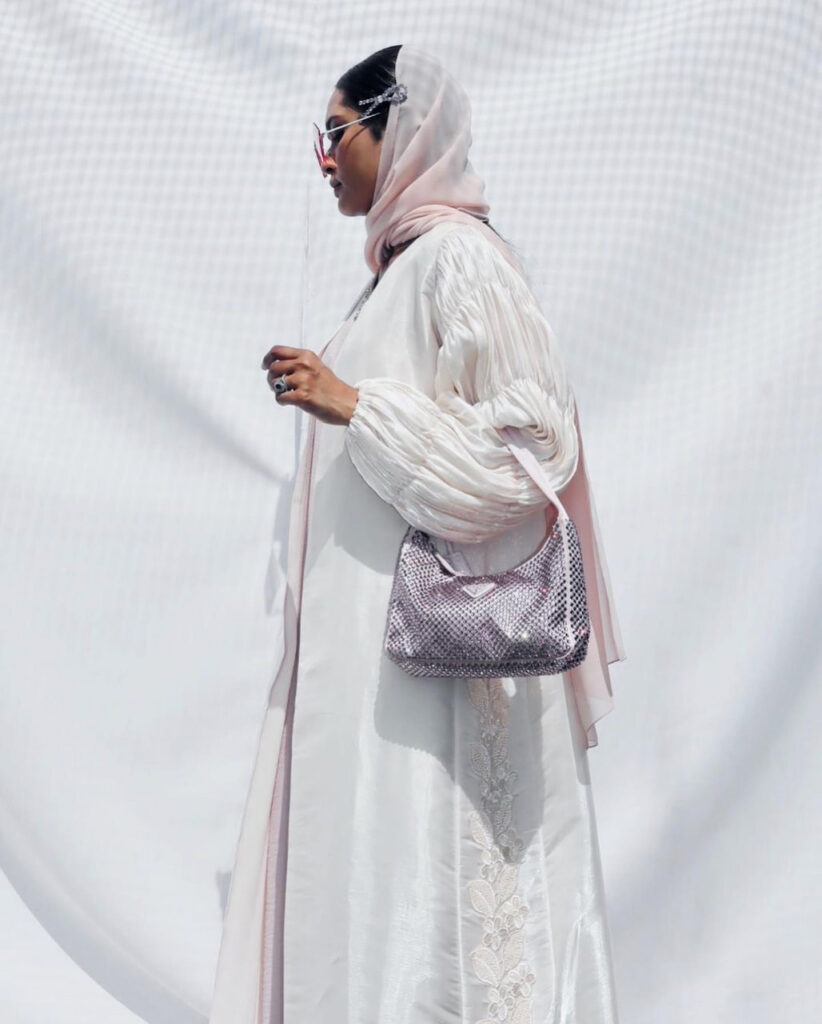
On curating your individuality through personal style, how not to be a fashion victim, and honouring your clothes.
N: I love this! One of the things that I tell my audience is that you have to figure out what your perfect wardrobe looks like. Obviously, you’re a stylist, so yours is probably a little bit bigger than mine. As an individual, though, I feel like a lot of people need to understand what works for them. Because trends are literally just that – they come and they go, not everything’s going to work on you. So, I think if you understand what your style aesthetic is, and what works for you, and your body, and your stage of life… then this will inform what you want to allow into your wardrobe.
H: Yeah, definitely. I think this is one of the things that people need to remember first, before shopping vintage, or just shopping altogether. I’ve successfully stopped shopping at H&M for over a year now, and that’s pretty big for me! Don’t get me wrong, Zara here in Dubai stocks such beautiful clothes, too. I used to have an addiction thing where you’re like, what do you call it… anxious and jumpy? And you’re having these ticks? Like, you just gotta get one of those! Now, I would allow myself one item from Zara every year. And that is a pat on the back for me, because I usually couldn’t withstand the temptation. But here’s the thing, as a regular shopper, everything is about trends. A lot of consumers, they want to get the next big thing because they want to be accepted by their peers. And this is not just bad for the economy – because there’s so many other beautiful designers with amazing bags for example, and they all choose to just buy that one bag, because it’s a trending bag, or the influencers are carrying it – but it’s also bad in terms of identity: you’re not creating your own, you’re just a fashion victim! I have a lot of requests from people wanting me to get an Amina Muaddi pair of shoes, or Jacquemus bags, those are top of my list. And sometimes it comes to a point where I’m just like… I don’t even want to try to go and procure this stuff. Because in the market, they are now sold at another 1000 (United Arab Emirates) dirham or 1000 (Malaysian) ringgit extra! And I think, do you want to spend that much money when you can get other bags that are just as nice? It will make you more unique, in terms of sense of style and taste. And I want that for my clients!
I don’t want to be a carbon copy of someone else when I could just be myself.
N: Don’t be a fashion victim!
H: Yes. If you are a fashion victim, you’re procuring items just for trends, and only want them once. If you are a true fashion lover, you will completely honour the outfit or the bag or the shoe that you have. And you will wear them again and again and again. So don’t read tabloids… read up about really interesting fashion figures in history where they don’t follow style at all, they create their own style. I think educating the masses in that sense is difficult, because everyone is propelled by what Haley Bieber wears. I myself am trying to shake that off. I don’t want to be a carbon copy of someone else when I could just be myself. I’m happy to educate people about it but also be more educated about it, too.
N: Shake off the temptation! Going back to Zara though, they do have great designers, putting stuff out there that was new at the time when a lot of people didn’t have access to nice things that won’t break the bank, and that was what made them successful in the first place. This opened the doors for what we now know as fast fashion. We’ve come a long way now since then, it’s not acceptable that they carry on some of the practices that made them successful, but I don’t think everyone will stop shopping tomorrow. However, I do think brands have responsibility to clean up their supply chains. And I don’t think anyone would disagree with us on that.
H: I agree. I am currently entering a phase of recalibrating: when I was in Malaysia, my business card is my Instagram. So, if people see me wearing the latest bags, or the latest shoes, automatically this attracts people to come to my site. People think it’s a strategy: they see me wearing this, they think I’m a ‘fashionable’ person. Now, I can say with integrity that yes, I think I’m a fashionable person but back then, I was such a sell-out! Wearing these things… I felt I was tricking the audience into believing that this is what fashion stands for. And that’s the kind of climate that you’re in. And because I was so busy, I didn’t have the time to put thought into the outfits. Now I’m in Dubai, and everyone here is an influencer – this is where influencers thrive – I felt pressured to appear to look a certain way, you know, with the lips and the boobs, the Balenciaga bags and all that, but then I realised… the more I tried to keep up with them, the more I felt, like, who am I? What is this brand that I’m trying to put out there? So as much as I love brands, like Bottega (Veneta), I will only buy stuff that I think would suit me. Actually, nowadays if I go to a designer store, I end up buying stuff that’s not trending from their collection, because I feel such a disdain to support only just one thing, because everyone says that’s a nice thing. This is what is happening with a lot of my customers – they are so convinced they need an item, even if it doesn’t fit their style, or their personality. I’m such a big believer of how personality sits above all else when you want to be a fashionable person! It’s easy for you to wear top-to-toe designer, but if you can’t carry it, then it becomes fake. So, going back to recalibrating my mindset: although you will be spending a little bit more on better quality items, you are spending it on something that truly defines your identity. Zara has so many unresolved issues like working conditions in Bangladesh or whatnot, but more importantly plagiarises other up-and-coming designers’ designs as well as big designers. That’s a HUGE problem, we can’t really support this. That quick satisfaction only lasts for that one second of that moment of time. And then after that nobody is talking about it anymore. So now it’s about educating the masses about how we can think, or rethink, about what we’re buying. If I buy this jacket, is this going to last the next 10 seasons? You know, I try to wear my items at least five years. I still have my Zara pieces from about seven years ago, which I thought is pretty amazing, because I didn’t think I would be keeping them that long. But because I’m a stylist, I know what to do with clothes. It’s hard when people are constantly bombarded with visuals, telling them this is how you wear this with this, and you’re like, ‘Oh, this one image?’

Now, I can say with integrity that yes, I think I’m a fashionable person but back then, I was such a sell-out! Wearing these things… I felt I was tricking the audience into believing that this is what fashion stands for.
On ultra-fast fashion, sustainability, and businesses in the post-COVID world.
N: At FASHINFIDELITY, we always talk about fashion being about over-production, over-consumption, and over-advertising. This plagiarising phenomenon is out of control! I recently discovered this brand, Shein, whom I’ve never even heard of. And they represent what’s already wrong with fast fashion, but more!
H: Oh my god, Shein is massive here! In Dubai you have the ‘mat sallehs’ who are a bit more in tune with sustainable shopping, they enjoy buying handmade fabrics and don’t mind pre-ordering. However, the locals and to some degree, some expats, they consume cheap materials and I see so much waste! I’m actually thinking of starting my own line, initially from vintage items, upcycling them into modern pieces. But there’s a stigma here with vintage or second-hand, much like in Malaysia. In Malaysia I think that mentality is starting to change, but in Dubai, everyone wears designer, designer, or they buy fake designer. I’m currently in a dilemma because I want to make a collection, but I don’t want to do mass production. There are so many talented tailors and artisans here, it’s something I’m researching…
N: There’s a big gap in the market for those who want to start, like you, but wanting to stay true to creating impact, and incorporate sustainability principles in their business. There isn’t a guideline, per se. I get asked this question all the time and I help small brands start right. I think it’s important to tap into ‘why’ you’re doing something, but not confuse it with your ‘how.’ I think we need to take this conversation offline.
H: OMG YES. Talking about sustainability, though – Malaysians are confused about that term, ‘sustainable’ or ‘sustainability.’ For me, I understand the concept, but I don’t understand the actions that link them together. For instance, there are a number of designers that are doing collections using sustainably-sourced materials, or using recycled fabrics. Well, this is good, but if you’re doing it in mass quantities, you’re not doing anything sustainably, right? You’re still contributing to wastage, overconsumption, etc. Yeah, it’s the same thing! So I find myself in this process asking, oh my god, how do I start? What do I do? I must consciously ask myself how do I do this, without jeopardising my true ‘why’, but also obviously people’s welfare and the environment. I started thinking a few years back that business owners and people who are business minded, who start their collections… all they think about is money, money, money. They don’t think about the aftermath in a way. And I think Malaysians in general, they don’t see this, they only want to buy this peplum (baju) kurung, which only is going to last for one day, and you probably will never wear ever again. And that’s it! A one-time satisfaction feed. So for me, I want to be able to create something that even if it’s a little bit expensive for people to buy, at least when they buy it, they’ll wear it again and again. So fostering that sort of mindset into people is something that brands need to think about incorporating into their lines. For example, when I sell my buyers these gorgeous abayas, I tell them look, this is not just for special occasions – freaking wear it out to the grocery shop, meeting your friends for lunch, and everything else! Restyle them! So I think brands need to do this, making the best or full use of whatever products that they put out there. Wouldn’t that be great?
N: …They just wouldn’t make as much profit, yawn.
H: If that’s what’s important to them, yes.
I’m such a big believer of how personality sits above all else when you want to be a fashionable person! It’s easy for you to wear top-to-toe designer, but if you can’t carry it, then it becomes fake.
– Haida Yusof-Yeomans
N: At FASHINFIDELITY we also get into how can we do capitalism differently. What does a post-capitalism world look like. I come from a corporate background and I believe people need to be mindful that businesses must happen, like we can’t just stop shopping tomorrow, and shut everything down. And so, if you want to start a business, whatever it is that you do, the advice that I always give people is that always start with the right ‘why’ and then work backwards in terms of the product you’re trying to sell – your ‘how’. The product would make someone’s life better, or contribute to the lifting and empowering a community out of poverty, or enhance the welfare of animals, etc. It has to be multifaceted. The product can’t only contribute to one thing, but it can maybe achieve two or three or four things, and then, when it is no longer at its optimum function, it can become feed or contribute to the environment or other living things in a way. I’m looking at how businesses can be a force for good in the next phase of capitalism and the next phase of the world, post COVID. Just to add to that, there are now all sorts of courses on this, for example, a Master’s in sustainable entrepreneurship. I don’t know if you’ve heard about it. From what I know, they’re looking at some of those things that you’re enquiring about. Businesses can’t be driven by profit, but by an innate reason to create impact. Along the way, you can make profit via your product, but not the other way around. We have to work within the limits of our planetary boundaries, and I really believe we can do so. When we talk about in the Malaysian context, obviously, we’re not even there yet.
H: Yes, it’ still a foreign concept. Again, it’s about recalibrating that mindset.

On shifting mindset to love second-hand clothing, finding vintage, and supporting young designers.
N: I often tell my clients when I do my talks to stop buying anything new, and thrift or swap if you want to have a wardrobe refresh, and if you did want to buy a new item, to support really good brands and local artisans.
H: I would definitely support the up-and-coming designers – the young ones are the ones to look out for because their eye into creating fashion pieces are a lot better than what the overpriced designer labels are doing right now. There are actually a number of awesome stores like APOC Store, 50 millimetre in London where they curate pieces from amazing young designers and they do things from cable ties to recycled fishing nets and they’re so fashion forward. That’s the kind of environment I think I’d like for Malaysia where they actually support the idea of wearing cable tie shoes and whatnot because these items are beautifully done. Get rid of the idea that it’s trash that you’re wearing… these are works of art that would be talked about.
N: Design sells.
H: They are so good!
N: Some Malaysians have a psychological barrier to wearing second-hand. 30% however (from the polls I run at my webinars) want to do the right thing by getting into the thrift culture but they say there’s not enough sizes or styles that are ‘nice’ or fit them. What do you have to say about that?
H: That’s interesting! I’ve definitely come across the superstitious types, too, like I don’t want to wear dead people’s clothes, I’ve heard all of that before. On thrifting, yes, there is definitely a size issue. However, when I shop, I always keep finding oversized stuff. So where am I looking that people are not? But yes, people might actually have issues trying to find nice stuff. In Malaysia, there are a couple of things lacking in terms of supporting the habit of thrifting. Firstly, there is education – the cultural stigma attached to the idea of buying someone else’s clothes, that it’s not cool, it’s not trendy and whatnot. Secondly, there aren’t enough curated channels. I’ve been thrifting since I was 13 years old, because my dad loved it and he still thrifts! When we go on holidays we never went to malls, we always visited the thrift shops or the markets because bless his heart that was what he could afford for us. But I loved it, I loved every minute of finding these unique items, you really have to have a knack for it. When I was last in Malaysia in June (2021) I realised why people go to me to find vintage stuff for them. Because it’s hard. It’s super hard to find nice pieces for women, right? But imagine me, thrifting in Malaysia, ten or so years ago – it was even harder. You know why? The people who bring these clothes to us are men. I’ve been to one of these places before, in Port Klang and even for me, damn, it’s overwhelming. There are some women but they’re mostly men with fanny packs and the bum bags and they were literally ready, lining up to go and rummage through these bales of clothing. Of course, these are not fashion-centric men.
N: ‘Business’ men.
H: I mean, back then obviously these thrift ‘shops’ only catered to migrants or immigrant workers because they can’t afford to buy things at the malls, right? So all those places that you see in Chow Kit, they only cater to that crowd. And then you have places like Amcorp Mall, there is only a collective of people who liked thrifted clothing, but then again, when I go there, it’s not as curated, it’s messy. Back then it’s even worse because you only have lots of jeans and lots of Harley Davidson type leather jackets, and maybe some Nike t-shirts and that’s it. So I really have had to scour through racks and racks and I have had to be incognito even, wear my most ugliest baju and dive into some of the most shittiest, kookiest areas just to find interesting stuff. I did find a Jean Paul Gaultier dress one time, though.

N: Wow!
H: Yeah, it was a legit one. This is like seven years ago before it became like a hit vintage item to score. Now, an archive JPG top would cost you anywhere from 1000 ringgit to like 5000 or even more, up to 7000 ringgit just for a shirt. So you do find these finds, they’re just not everywhere. And it’s harder for people to find items in a centralised place, especially for women. I actually had this idea if it weren’t for COVID, that I wanted to contact the guys from either at Jalan Jalan Japan or 2nd Street… asking them if I could be their chief curator or something! I would help select pieces that would be appealing to the more contemporary buyer. There are such things as dated items, you know, like what your grandma wore that you can’t wear at all. And then there are pieces that your grandma has worn, but you can still wear again. These are timeless pieces, they can be worn again and again and again until it’s worn out. I’ve seen so many of these pieces, it’s just that they haven’t put them into proper sections.So the buyers miss out on these. That is an issue in Malaysia. Also, plus size women, there definitely is a limit on nice clothing for them. I don’t know if the people who select these items from the bales deliberately just choose oversize clothing, because again, these are men that are doing the sectioning. I have seen on 2nd Street where they have the warehouse open to public right next to the shop in Subang. I see women sifting through these bales. But then again, you end up wasting the clothes, because people aren’t going to buy the not-so-pretty pieces, or they’re not styled in a way where it’s pretty. This is why I envy European vintage stores, because they know how to curate these items. They know how to style these items on their shop mannequins or in their social media accounts, they’re so savvy. Whereas for us, it used to only be very utilitarian, for the working class, and those who couldn’t afford to shop at high-end or even mid-range labels in the malls like Padini. I dare say thrifting for vintage has now become elitist – there are really cheap, unattractive clothes for the masses, and then there are high-end stores that sell stuff from overseas, upward of 1000 ringgits.
N: There’s no middle ground, for the rest of us.
H: Yeah.
…Curating is so important. It teaches Malaysians who don’t believe in thrifting, or just completely against wearing second-hand clothing, that you can breathe life into these clothes once more.
N: Interestingly, however, most thrifted items in Australia, where I am, are for the middle-class, but started off as charitable places for those who are on lower wages. And curating is definitely the right descriptor, because even here where we sell them, mostly organised by religious-affiliated institutions, like Sacred Heart Mission or St Vincent de Paul, colloquially knowns as ‘Vinnies’, we have volunteers who curate their shop windows. I had an IG Live earlier in the month, and when this question about availability of clothing in varying styles popped up, I told my audience there’s actually so many ‘bigger’ sized clothes and designs that end up in Malaysia! I’ve seen it! My client operates in Port Klang (Malaysia) and sorts and remanufactures clothing that don’t sell here. So I have to wonder, who sorts these clothes!? I reckon there’s a business opportunity there, for sure.
H:Yes, curating is so important. It teaches Malaysians who don’t believe in thrifting, or just completely against wearing second-hand clothing, that you can breathe life into these clothes once more. You can be so much more fashionable wearing these clothes instead of clothes from Zara and everything else, because it’s all about how you style them and how you honour these clothes on you. There’s value in these pieces, the wearability factor is super high. I remember visual merchandising work in some of the thrift shops in London was fantastic! I didn’t think I wanted the boots that I saw in this shop until I saw how they styled it. Trying to make these clothes look appealing to the public – you can definitely make it look expensive! In the past, working with some clients there are limitations, like you can’t wear this with that, which is completely against my ethos of fashion styling. In their heads, they only want to wear Gucci because they think they’re ‘expensive’, or ‘exclusive.’ I had a hard time trying to convince them you can wear vintage or second-hand and still look great. Just because you wear designer labels or new clothes… this doesn’t automatically make you feel expensive. It’s about how you carry it and how you sell it. And once I’ve convinced them they are shocked to see how they can stand out and look different! If you know how to wear them, you can definitely make it work. So I have been toying with this idea for so long. Jalan Jalan Japan, if you’re reading this, just give me access to all your clothes because I love I love love. I wish I could have access to your coats, I don’t mind being in a sweaty warehouse, because I love digging through the stuff. Haha!

On Gen-Z turning tides and supporting craft.
N: On a positive note, I think the tide is turning, I think we both agree that people are more conscientious about the things that they buy now.
H: Yeah. And based on my vintage posts, I have so many people DM-ing me I want this, I want that… there’s actually a good business in it, too. It’s just that it’s a lot of work for me – one person to have to do the sifting, the sourcing… it’s time, energy and money. Which I don’t mind doing because I end up buying for myself even. But I wish I had the opportunity to do this full-time, which I can’t, not right now. Nowadays, even massive celebrities, they’re no longer pulling clothes from designers. You know, they’re actually pulling clothes from vintage curators, like, Pechuga Vintage, or NL Official Vintage… people have started to actually go to them to find these rare, archival pieces to wear to events. This is the new status of dressing that is unattainable to the general masses in a way now because obviously, they’re a lot more expensive to procure. But the trend is heading towards this. A lot of thought comes into it when you do decide to dress vintage. At the moment, the younger kids, they’re doing this so well. And I think the younger generation is going to pick this up. And, because of Instagram, Pinterest, all these visual stimulations they are exposed to…. it’s just amazing to see what they can pull off, and they’re already being entrepreneurial from such a young age. So, this generation is embracing the changes already… they’re going to be the ones that are going to pave the way to more sustainability in fashion. If you look at Carousel there are tonnes of pages where college kids or high school kids are buying oversized Tommy Hilfiger shirts and turning them into cropped tops or shorts. In Depop they are upcycling clothes. I am seeing that trend currently in Malaysia. It’s just not that mainstream yet, but we’re getting there.
N: Thinking about the future and how we can have a society that embraces thrifting and styling, what else do you think is the missing puzzle in this piece?
H: We need to go back to our roots. I used to buy these mengkuang basket bags in Bangsar, they’re made by artisans in Terengganu, and these costs about 40 ringgit, but Marni, the Italian brand, they’re selling similar products for 5000 ringgit! Why would you buy that when you can support our local craft? Embrace your batik makers, too, for example. There’re so many ways you can embrace sustainability, it’s not just buying stuff made from sustainably produced materials, it is also about supporting the craftsmen, the artisans with local knowledge who have been doing this for generations… you’ll soon realise that this definitely enriches your life, broadens your mind.
N: Yes, I always keep telling people that, in Malaysia, we need to figure out what sustainability means to our own heritage. We don’t need to compete with what sustainability means to the rest of the world. Everyone has their yardstick. What we’ve seen is that globalisation has made Western aesthetics taken over what we think we want to achieve, or to ‘look’ like, it’s made us lose some of our own aesthetics. We need to be propping up our own local industries because we owe the future of our heritage to them.
H: Yeah, I’m very hopeful for that, because I do want to see our local industry flourish. I’ve been following a lot of like activism pages – yours is the best in fashion by the way – one of the contents I really like watching is about the Native Americans and how they are showcasing their heritage on TikTok. I find that very interesting because obviously, it’s a culture that’s completely been swept under the rug by the American media. So, seeing them out there and seeing how they are fusing that with their Western-style fashion is so cool! It’s a bit like, ‘I am American, but I’m also Native American.’ So, you can definitely merge differing style aesthetics but also embrace your culture. The sense of pride the wearer would feel… it just warms my heart.
N: Definitely. I think that’s the future of fashion. We’ve got an interesting IG Live coming up in August where I’m interviewing a couple of indigenous brands in Malaysia to celebrate International Day of World’s Indigenous Peoples and I’m looking forward to a bit more insight into their individuality and how their heritage informs their brand ethos, and how does this contribute to impact.
H: I’m actually really curious to see what other brands that I can support because – this is probably the same with you – the further you are away from your home country, the more you want to be connected to it somehow. So I’d really love to tap into that, after this whole COVID mess is finished. I would love to go to Terengganu or Malacca again and discover all these local shoe makers, there are tonnes of these craftspeople and makers in Penang that I didn’t get to explore. So let’s reconnect to our roots and see how we can put them back in the fashion map, because this is something that you can’t get anywhere else.
N: Well, on that note, thank you so much for your insight, your wisdom, and your time, Haida.
H: Thank you, Najah!
Even though we ended the recording of the conversation, Haida continued to speak candidly on her experience with fashion in Malaysia, and we promised each other to explore more sustainability in fashion topics. Stay tuned!
Don’t forget, we’re already halfway through our Fashion Detox challenge that runs from July through to September. How are you going with this? Feel free to DM us on Instagram and report back on your progress.
Here is a list of places that Haida highlights as places to get into thrifting:
- Jalan Jalan Japan, multiple locations. Avoid the Subang and Cheras stores, they are always popular! Try the less popular ones for a chance to find good pieces.
- 2nd Street, Subang
- Amcorp Mall, PJ
- Shah Alam Sunday market
- Summit USJ
Najah’s list of marketplaces where you can thrift:
- Kantin, Gombak (@kantinsg) – there are a few thrift stores next to the open-air food stalls here that sell thrifted as well as vintage items
- @ethrift.co
- @quirkthrifts
- @veganmilkcloset
- @preloveaddiction
- @secondchance.beleaf
- @circlecloset
- @thryffyofficial
- @yuuse.me
- @backtoclassic.my
- @bintejivintej

Do you know of others that we’ve missed out on? Please share these with us!
Join us in our Slow Fashion movement with the hashtags #ConscientiousFashionista and #wardrobetruths on Instagram, and follow us at @fashinfidelity.
Tags: #haidayusof #stylist #vintagefashion #thirftedfashiontips #thriftedfashion #malaysia #malaysianfashion #fashionvictim #conscientiousfashionista #fastfashion #slowfashion #wardrobetruths #fashioneducation #fashion #fashinfidelity

